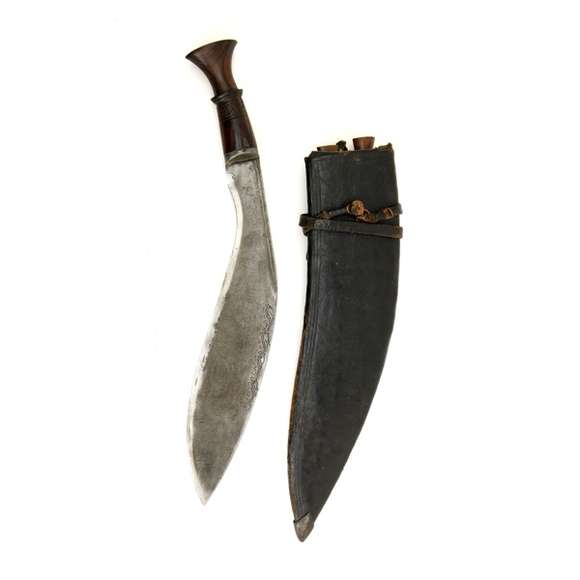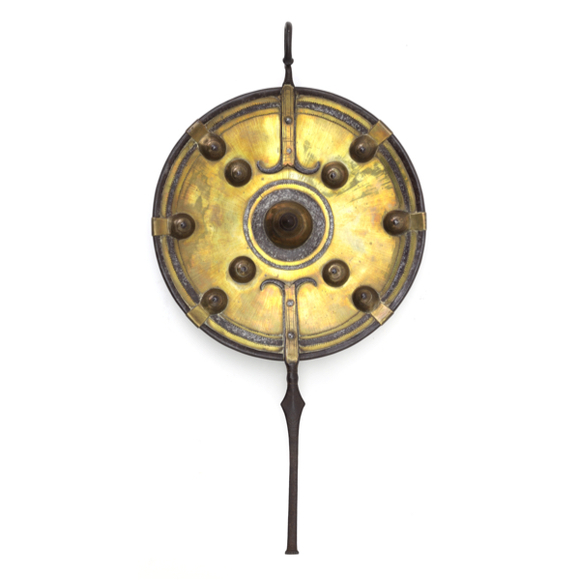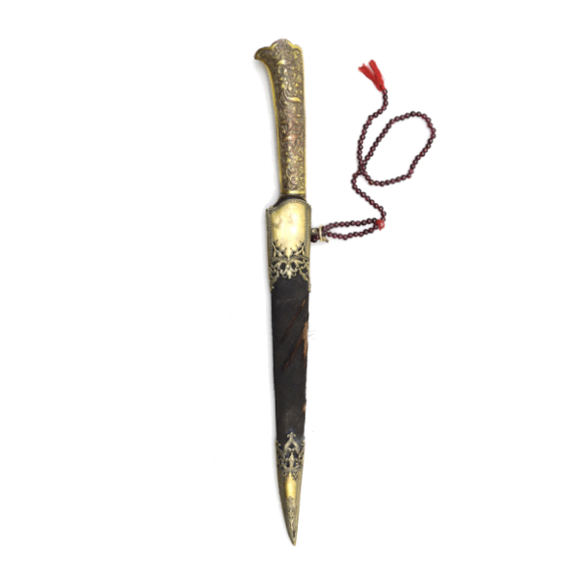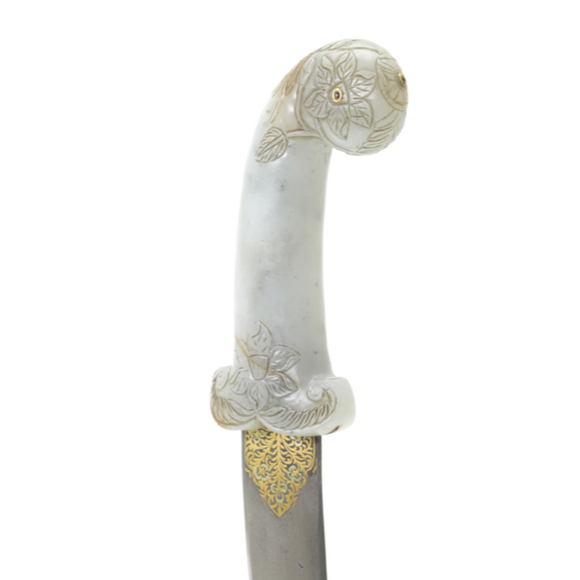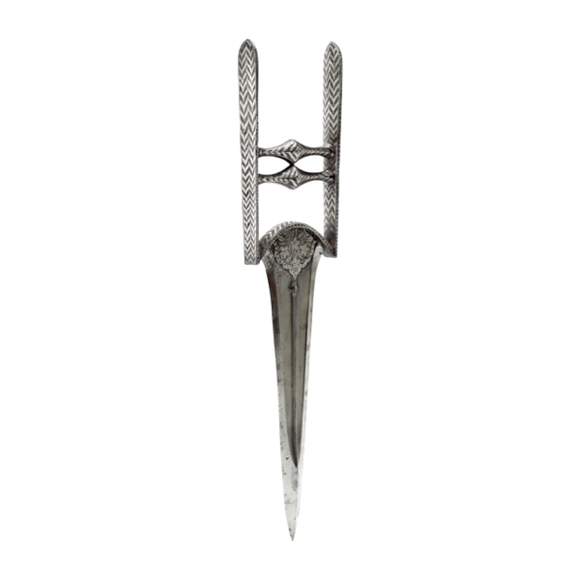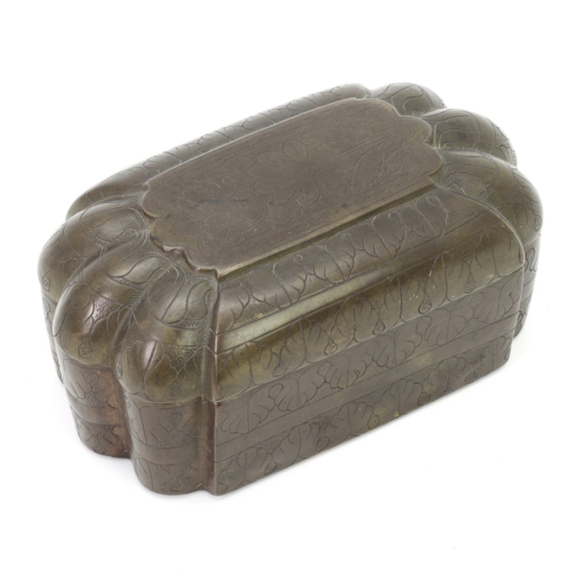Signed: Ricky Milnes, India 44, Burma 44, Ramree 45.

Total 69.6 cm
Effective 60 cm
(Inside nock to base head)
Length 86 to 90 mm
Width 8.5 mm
52, 53 and 57 grams
Probably Jaipur
Steel, brass, reed, lacquer, pigments, sinew, bone
18th - 19th century
Introduction
There is a group of Indian arrows with an elongated head that gradually thickens towards the end, and with a sudden facetted tip. Their heavy heads make them generally about double the weight of regular Indian war arrows.
As an archer myself, I have long been puzzled about the purpose of such arrows. Gravity works against you when shooting something that heavy with a bow that is optimized for shooting something lighter.
Unless... you are shooting down the walls of this:

Mehrangarh Fort, Jodhpur, Rajasthan.
I have come to believe that these were probably primarily anti-siege arrows, meant to be shot downwards so that their weight actually helps in their acceleration and increases their impact.
Their use may not have been exclusively for use from forts or walls. They may also be useful when shooting from the high ground on the field, or from the back of an elephant.
In addition, an interesting passage on archery training came to my attention:
... When afternoon prayers are over, he shoots five arrows into the Khak Towda*, and then goes into the Womens Apartments.
*Khak Towda is a heap of fine Mold, well sifted, and beat strongly in betwixt two Stone Walls. 'Tis five Foot high, three Foot thick, and from three to four Foot broad. The Front of it very smooth and even, beat hard with a heavy Trowel. One who is well skilled, can shoot his Arrow into it quite to the Head; whereas one that shoots ill (be he never so strong) can't put a third Part in.
The arrows for this Exercise have the Iron Part quite round, about four Fingers long, of the Size of the Reed, until near the Point, where they are somewhat thicker, from which Part they taper gradually to a sharp point. The length, from the thickest Part to the Point, is from 3/4 to 1 Inch.
-Unknown author, in the camp of Nader Shah at Jalalabad, 1738
The description of the above arrowhead matches this type exactly. Khak Towda is written خاک توده in Persian and literally means "mass of soil".
The author doesn't give a name for the arrow, nor mentions the arrows are made exclusively for this game. Due to the prevalence of such arrows in Indian armories, I tend to think this penetrative test was not their sole purpose.
Notes to introduction
1. From: A translation of some paragraphs of a letter wrote by a Kuzzlebath in Nadir Shah's camp, at Jillalabad, to a friend of his at Delhi, concerning Nadir Shah. Published in: James Fraser; The History Of Nadir Shah. Pages 140-143.
Description
A set of three Indian arrows with large and heavy heads. Although similar in construction and decoration, I think they are not of the same set but definitely of the same workshop/armory.
Their heads are long and slender, gradually thickening and then coming to a sudden point with eight facets. The angle of the tip section is probably wider to increase the shock when hit.
The heads are seated on two steel washers, separated by three small brass washers. They have long tangs that go into a dark brown reed shaft.
One of the shafts is split at the top, so the head can be taken out and studied.
The tails are subtly decorated with paintings of tiny flowers and the nocks are separate inserts of bone, lacquered vermillion inside.
Dating/Attribution
There is a near-identical arrow in the City Palace Museum in Jaipur, accession number MJM46.2943. It is identical both in terms of the washers near the tips, the dark color of the shaft, and the style and execution of the painting at the tail. It, too, has a bone nock with lacquered hollow.
Most of the arms content in this museum came from the personal collection of H.H. Maharajah Sawai Man Singhji who donated them in 1959.1

Jaigarh Fort near Jaipur.
The arrow is dated to the 18th century, and these arrows probably dates from the same period.
Conclusion
An interesting group of three arrows that I believe to be anti-siege arrows, meant to be shot from a higher spot so their weight helps accelerate them. A well-made grouping, with separate bone heads reed shafts with a dark finish.
Notes
1. Robert Elgood; Arms and Armour at the Jaipur Court: The Royal Collection. Niyogi Books, 2015. Page 224-225.







Peculiar shield with catching hook, used by the Santali people of Bengal.
Fine Indian kard with gilt copper alloy hilt, decorated with chiseled flowers.

